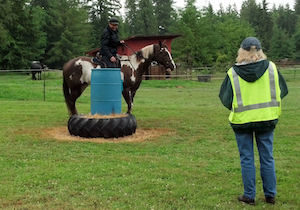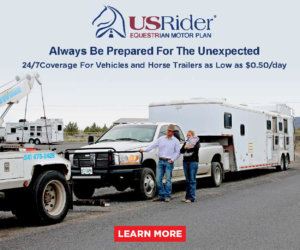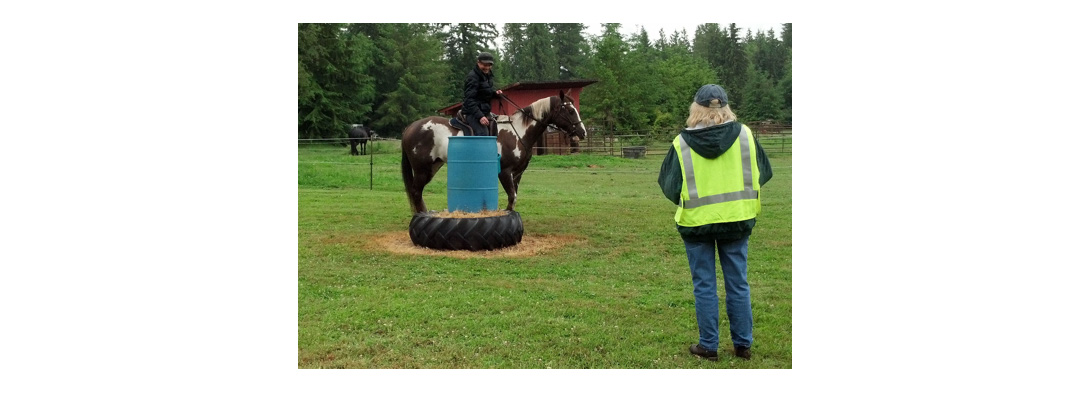The Secret to Succeeding at Obstacle Challenges
by Marilyn Pineda

The Pacific Northwest riding season is here and opportunities in trail riding and obstacle challenge events such as what is offered by Equine Trail Sports (ETS) abound. You may not know that ETS events exist from the northern corners of Washington to the southern corners of Oregon and Idaho!
Here at Fire Mountain Trail Course facility we also host obstacle challenge events and this question has arisen several times: “What kinds of obstacles should I practice so I can do well at challenge events?” My answer to that million dollar trail training question might be simpler than you think: Time spent practicing the basics is what brings success in obstacle challenges.
Tools learned from ground training exercises that are then brought to the saddle will set you up for success in all sorts of obstacle challenge situations. Some of these include: moving front quarters independently from the hindquarters, as well as moving hindquarters independently from the front quarters; backing up with a loose rein (even to the point of being able to back up using just your leg cues); the ability to move your horse, or any part of your horse, in any direction one step at a time; and your horse’s ability to take responsibility for his feet during each challenge.
Naturally, you need to pay attention to your posture and balance in the saddle as you practice these maneuvers. It is also important to build your horse’s confidence towards the task of being able to carry or drag an item. In addition, take great care in your ground training to acquaint your horse with the concept that the items you handle may rise to his eye level, rub against him or make strange sounds.
The four main categories that you will find in trail challenges will incorporate confidence, ground manners, horsemanship and/or precision. An example of confidence might be something like a cowboy curtain (car wash) or a teeter-totter bridge. The best tools for moving forward on a confidence challenge are patience and what I refer to as a “contract” for being willing to move one step at a time. This would be true, too, for stepping into water, passing by noises or walking over tarps. If you can move your horse forward one step at a time – waiting for him to relax before you ask for the next step –the training will eventually create a courageous horse. The root of “one step at a time” also applies to challenges pertaining to ground manners. The handler should also use a patient, one step at a time, approach in asking the horse to stand still for mounting, accepting the misty noise from a spray bottle, or even scary clippers.
Horsemanship will include exercises such as going up or down a hill, backing around corners and stepping over logs, rocks or windfall. Make sure you remain upright and comfortably balanced in the saddle; refrain from twisting around to see behind you or bending over to look at the ground. Some of these challenges also present opportunities for your horse to take responsibility for his feet!
Precision obstacles include things like backing around corners in a small maze, or passing through a gate without removing your hand from it. Precision challenges are going to require the ability to move any single part of the horse in any given direction, separately (pivoting on the forehand) or in unison (moving the front quarters over a step at a time) as you back to execute a backing circle.
Practice and refine the elements of basic training to find yourself Riding Well Grounded toward obstacle challenge success!
Published August 2014 Issue

The Northwest Horse Source is an independently owned and operated print and online magazine for horse owners and enthusiasts of all breeds and disciplines in the Pacific Northwest. Our contemporary editorial columns are predominantly written by experts in the region, covering the care, training, keeping and enjoyment of horses, with an eye to the specific concerns in our region.






